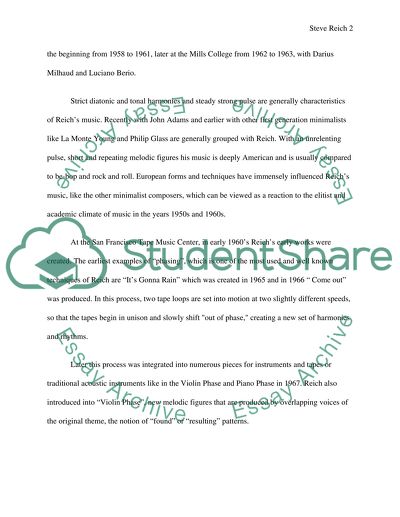Cite this document
(“Stephen Michael Reich Biography Essay Example | Topics and Well Written Essays - 2000 words”, n.d.)
Retrieved from https://studentshare.org/biographies/1534644-stephen-michael-reich
Retrieved from https://studentshare.org/biographies/1534644-stephen-michael-reich
(Stephen Michael Reich Biography Essay Example | Topics and Well Written Essays - 2000 Words)
https://studentshare.org/biographies/1534644-stephen-michael-reich.
https://studentshare.org/biographies/1534644-stephen-michael-reich.
“Stephen Michael Reich Biography Essay Example | Topics and Well Written Essays - 2000 Words”, n.d. https://studentshare.org/biographies/1534644-stephen-michael-reich.


